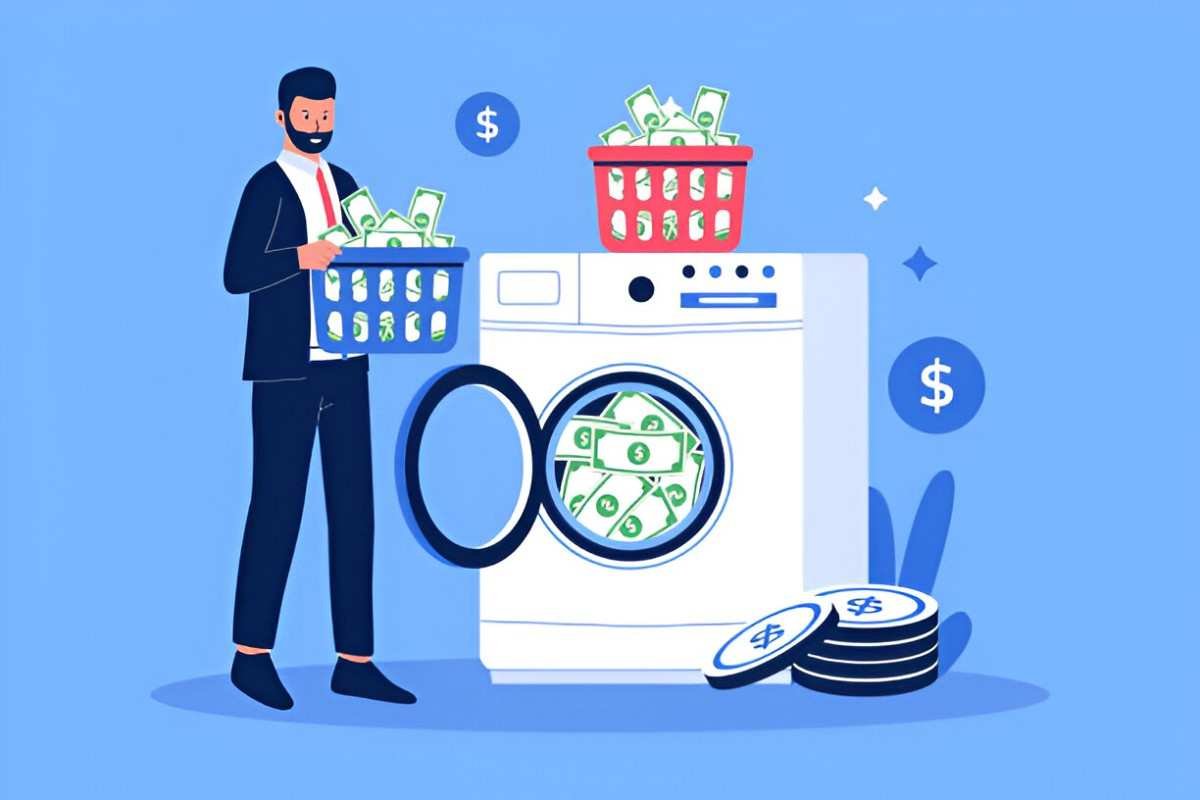Money laundering is a financial crime that fuels corruption, organized crime, and terrorism. I’ve spent years dissecting financial fraud, and in this guide, I’ll break down how money laundering works, why it matters, and what you can do to recognize it.
Table of Contents
What Is Money Laundering?
Money laundering disguises illegally obtained money to make it appear legitimate. Criminals use complex transactions to obscure the origin of funds, making dirty money look clean. The process typically involves three stages:
- Placement – Introducing illegal funds into the financial system.
- Layering – Moving money through multiple transactions to confuse auditors.
- Integration – Merging laundered money with legal assets.
The Scale of Money Laundering in the U.S.
The United Nations estimates that 2-5% of global GDP is laundered annually. For the U.S., that could mean up to \$1.25 \text{ trillion} circulating through shell companies, casinos, and real estate.
How Money Laundering Works: A Step-by-Step Breakdown
1. Placement – Getting Dirty Money into the System
Criminals avoid depositing large sums directly into banks due to reporting requirements. Instead, they use:
- Structuring (Smurfing): Breaking large amounts into smaller deposits below the \$10,000 reporting threshold.
- Cash-Intensive Businesses: Launderers funnel money through businesses like car washes, nail salons, or restaurants where cash transactions are common.
Example: A drug cartel makes \$500,000 in illicit profits. Instead of depositing it all at once, they split it into 50 deposits of \$9,500 across different banks.
2. Layering – Disguising the Money Trail
Once the money is in the system, launderers move it through:
- Shell Companies: Fake businesses with no real operations.
- Offshore Accounts: Jurisdictions with weak financial regulations.
- Cryptocurrencies: Bitcoin and privacy coins like Monero obscure transactions.
Example: A fraudster transfers \$2 \text{ million} from a U.S. account to a shell company in the Cayman Islands, then converts it into Bitcoin.
3. Integration – Making Clean Money Spendable
The final step reintroduces laundered funds as legitimate income. Common methods include:
- Fake Loans: A criminal “borrows” money from their own offshore company.
- Real Estate Purchases: Buying property with illicit funds and selling it later.
Example: A corrupt politician “invests” \$1 \text{ million} in a luxury condo through a shell company, then sells it a year later, claiming the profit as legitimate capital gains.
Common Money Laundering Techniques
| Method | How It Works | Real-World Example |
|---|---|---|
| Trade-Based Laundering | Over/under-invoicing goods to move money | A company imports \$100,000 worth of goods but invoices \$1 \text{ million}, hiding \$900,000 in illicit funds. |
| Casino Laundering | Buying chips with dirty cash and cashing out clean | A criminal buys \$50,000 in chips, gambles minimally, then redeems for a check. |
| Cryptocurrency Mixing | Using tumblers to obscure blockchain trails | A hacker sends Bitcoin through a mixer, splitting it into untraceable transactions. |
The Math Behind Money Laundering
Money launderers exploit financial loopholes using mathematical tricks. One common formula calculates the effectiveness of layering:
\text{Anonymity Score} = \frac{\text{Number of Transactions}}{\text{Regulatory Scrutiny}}A higher score means better obfuscation. For example:
- Single Bank Transfer: \frac{1}{10} = 0.1 (Low anonymity)
- 10 Crypto Transactions: \frac{10}{2} = 5 (High anonymity)
How the U.S. Fights Money Laundering
The Bank Secrecy Act (BSA)
Enforced by FinCEN, the BSA requires banks to:
- Report cash transactions over \$10,000.
- File Suspicious Activity Reports (SARs).
The Patriot Act
Expanded BSA requirements after 9/11, targeting terrorist financing.
AI and Machine Learning in Detection
Banks now use algorithms to flag unusual patterns, such as:
- Unexpected Large Deposits: A small business suddenly depositing \$500,000.
- Rapid Movement of Funds: Money transferred through five countries in a week.
How to Spot Money Laundering Red Flags
I’ve trained auditors to watch for these warning signs:
- Frequent Large Cash Deposits – Especially just below reporting thresholds.
- Complex Ownership Structures – Shell companies with hidden beneficiaries.
- Unusual Transaction Patterns – Rapid in-and-out movements with no clear purpose.
Case Study: The Danske Bank Scandal
Between 2007-2015, \$230 \text{ billion} of suspicious money flowed through Danske Bank’s Estonian branch. The scheme involved:
- Non-resident clients moving money from Russia and Azerbaijan.
- Fake invoices and shell companies.
- Weak internal controls allowing the laundering to continue for years.
Final Thoughts
Money laundering isn’t just a crime for mobsters—it enables drug cartels, corrupt politicians, and cybercriminals. By understanding how it works, you can better spot the signs and protect yourself.





